#fashion monograph
Photo

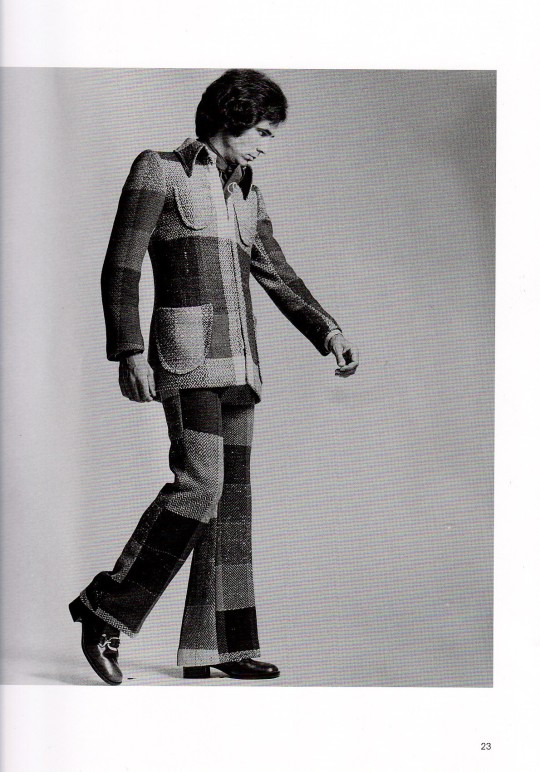
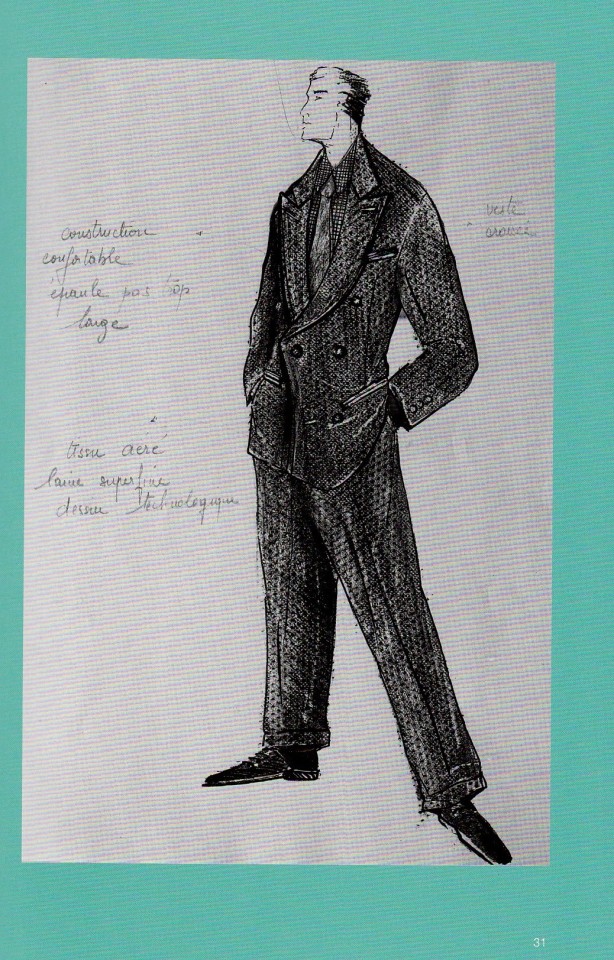
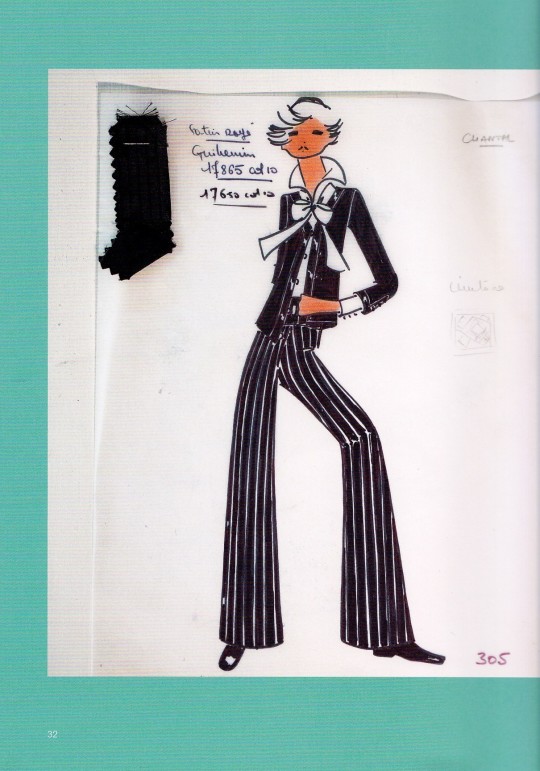
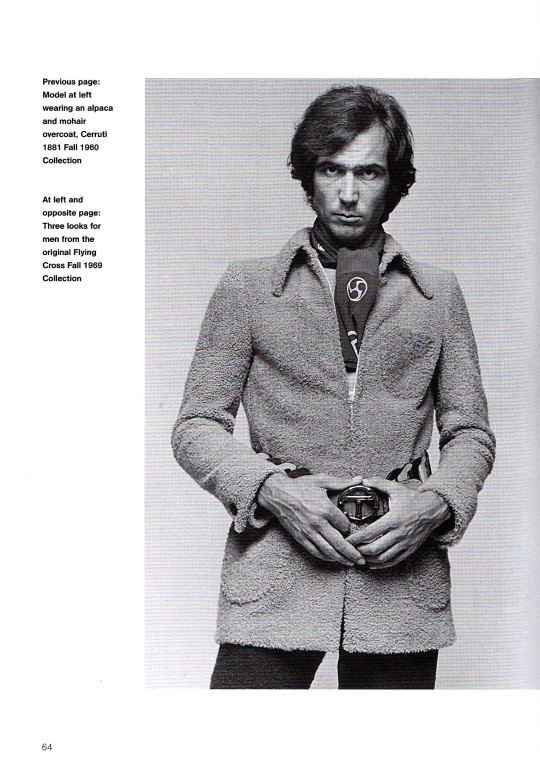
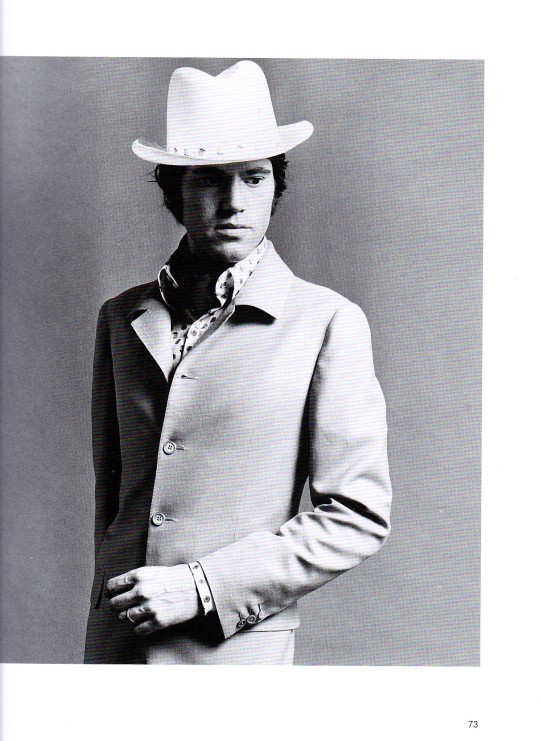

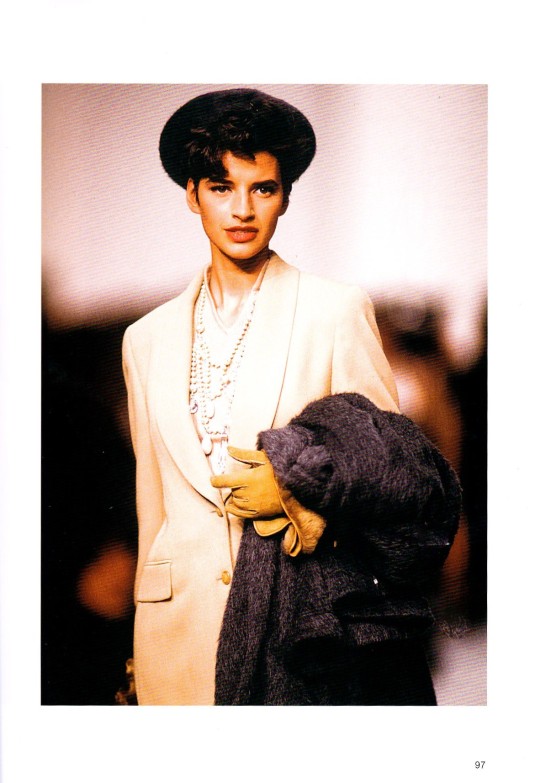
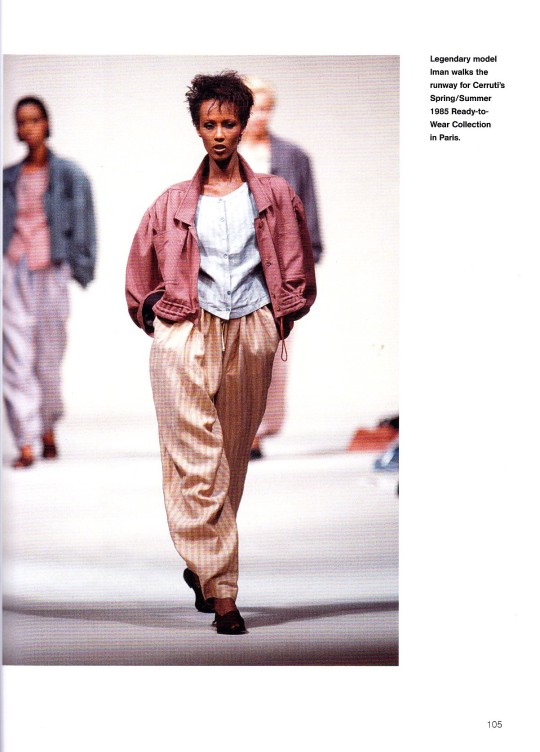
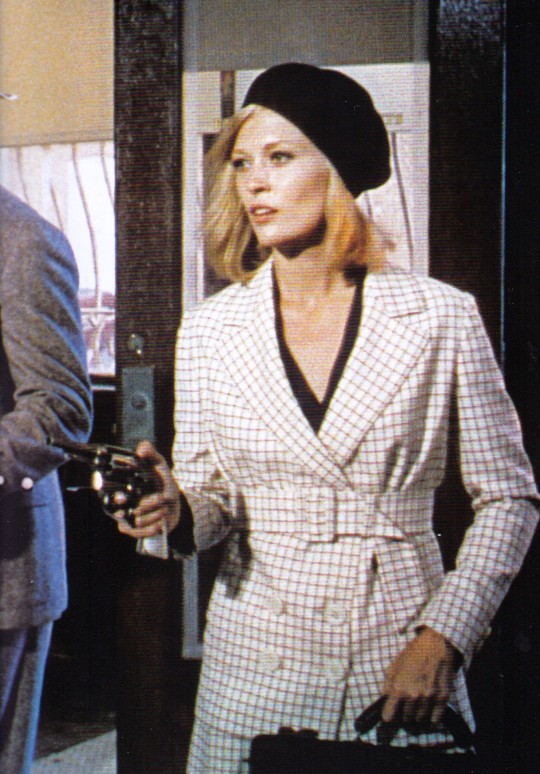
Nino Cerruti Fashion Icon
Cindy Cook
Foreword by Jason Basmajian (formerly chief designer Cerruti 1881) and a contribution by Julian Cerruti (son of Nino Cerruti)
teneues publishing, Düsseldorf 2022, 224 pages, Hardback,30 x 23,5 cm, 120 color ill., ISBN 9783961714261
euro 52,00
email if you want to buy :[email protected]
"Fashion is balance, with a dash of theatre," was Nino Cerruti's favourite bon mot. This monograph, the most substantial on him to date, is an entertaining and gorgeously illustrated homage to the great Italian fashion designer, whose deconstructed jackets and supple fabrics revolutionised menswear in the 1960s. He took over the family business, which his father established in 1881, at the age of 20 and immediately began to make his mark. In 1965 he opened a boutique in Paris where he launched women's fashion, being the first designer to focus on pants (this at a time when many restaurants in Paris denied women entry if they were wearing pants). He dressed generations of movie stars, both on and off screen, including Jean-Paul Belmondo, Yves Montand, Catherine Deneuve, Richard Gere (wearing a Cerruti suit in Pretty Woman), Jack Nicholson, Michael Douglas, Tom Hanks, and Kathleen Turner, among others. This book showcases the elegant nonchalance and uncompromising creativity that went into his designs and follows his career as one of the great pioneers of 20th century fashion.
26/11/22
orders to: [email protected]
ordini a: [email protected]
twitter: @fashionbooksmi
instagram: fashionbooksmilano, designbooksmilano tumblr: fashionbooksmilano, designbooksmilano
6 notes
·
View notes
Text


Leather jacket & cigarette drags
#me#leather#leather jacket#jacket#cigarrete#smoke#smoking#cigarettes#cigar#cigars#vape#vaping#ootd#fashion#asian#bnw#photography#black and white#monograph#kodak#film#aesthetic#aesthetics#travel#holiday#vacation#house party#resort#villa#hotel
15 notes
·
View notes
Photo
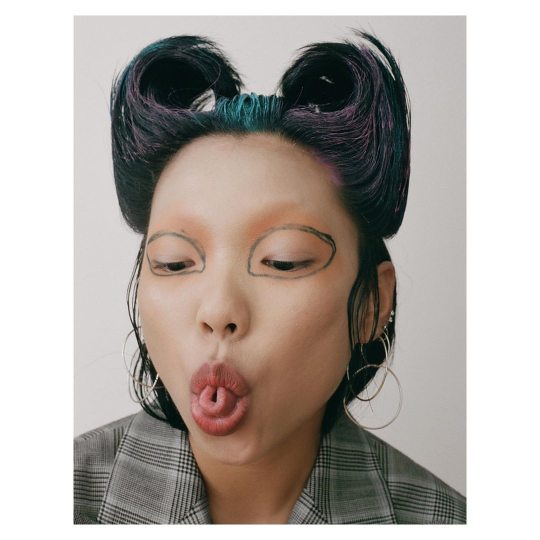
Ocean Wide “When I was 15, I met a successful photographer and I remember thinking ‘well if he’s doing this as a job, maybe I could too.’” - Kane Ocean (successful) Photographer. Kane Ocean is a Montreal based photographer. Ocean is passionate about fashion, music and travel, so he’s in the right business then. Ocean manages the diverse aspects of his career as a freelance fashion photographer - working with clients like ‘SSENSE’ and ‘Dime’ - and co-leading his party and record label, ’00:AM’ which showcases local and global artists. Ocean’s photography is a thoughtful translation of fashion-fusing eccentricity which he brings to every shoot. This includes meticulous attention to develop the set, environment and lighting - down to scouting distinct models. Ocean is also known for his street photography and situational photography - capturing the experiences of youth and friends at play. Now he’s an author to - the first monograph from Ocean ‘WAYN’ is a tribute to youth culture in Canada and beyond. ‘WAYN’ by Kane Ocean is out now. #neonurchin #neonurchinblog #dedicatedtothethingswelove #suzyurchin #ollyurchin #art #music #photography #fashion #film #design #words #pictures #monograph #youthculture #friendship #nightlife #contemporary #photographer #skateboarding #canadian #musicscene #00AM #travel #fashionphotography #wayn #kaneocean (at Worldwide) https://www.instagram.com/p/CdsVX4fo5bU/?igshid=NGJjMDIxMWI=
#neonurchin#neonurchinblog#dedicatedtothethingswelove#suzyurchin#ollyurchin#art#music#photography#fashion#film#design#words#pictures#monograph#youthculture#friendship#nightlife#contemporary#photographer#skateboarding#canadian#musicscene#00am#travel#fashionphotography#wayn#kaneocean
0 notes
Photo

Ann Demeulemeester: S/S 1998 Collection, via Ann D. Monograph Rizzoli Book. Scan Provided by @f.liiiz
ARCHIVE.pdf: Fashion Book Scans, Articles, and Content for the World.
2K notes
·
View notes
Note
I love this ask!
A Persuasion Campus novel please. (Must go lie down at the thought of Ciarán Hinds as a college professor.)
So, to address your parenthetical first: you've seen Circle of Friends, right? I didn't love it, and his role, iirc, is not sympathetic; however:

The academic gown over the three-piece suit is just gratuitous. AHEM. A Jane Austen campus novel AU is tricky, I think, because I have to undo most if not all of the family relationships in favor of other connective nexuses (nexes? nexii? help). Here goes. I might have spent too much time thinking about this over my morning tea.
Sir Walter Elliott is, inevitably, the college president. He's photogenic. He loves uttering empty and incorrect platitudes about his own achievements. He loves schmoozing with important people. Unfortunately, he's perfect for the job.
The Admiral and Sophy have been at the university for ages, and the Admiral loves to tell the story about how he was her spousal hire in 1987, not the other way around.
Elizabeth is using family money to take a never-ending PhD in fashion history. She's always weirdly vague about her project, and finds a way not to participate in chapter exchanges. Rumor says that it's Sir Walter's influence keeping her from being kicked out.
Mary took an M.A., married money, and has been (dis)contentedly living on the UWS ever since. It's not quite true to say that she's never looked back. She visits colloquia and other open department functions with a depressing persistency, and appears not to notice that this is sometimes awkward for people who are united by their passion for a subject in which she never excelled.
Louisa and Henrietta are grad students, and remarkably carefree with it. Somehow their work does, in fact, get done.
Harville is, I think, Wentworth's sailing club buddy.
Mr. Elliott will be a smarmy visiting academic at another area institution. Unfortunately, I know his type. Eventually it will come out that he's eternally "visiting" because of a plagiarism scandal in his past.
Lady Russell is, of course, Anne's PhD supervisor. Who else would be in loco parentis and giving prudent and unwelcome advice?
Anne administers the interdisciplinary center in eighteenth-century studies. While she is several decades younger than those who usually take on such jobs, this works out well for several reasons. She has a head for detail, and is conscientious to a fault. Also, the faculty are (almost) all extremely fond of her, and the importance of this in getting academics to comply with bureaucratic necessities cannot be overstated. She's an alum of the program, and did finish her PhD. Lady Russell still sometimes sighs, a little too audibly, when she sees her erstwhile star student being competent in the front office. But care-taking duties during her mother's long illness meant that Anne's progress through the degree was slow, and international conference travel to boost her reputation didn't happen. The job market, with its precarity and long-distance upheavals, didn't either. So here is Anne, still in the department. Anne herself may not have the career or the life she dreamed of, but she has employment and health insurance, which is more than many recent PhDs can say. She sings in a choir. She tells herself that she has a good life.
Frederick Wentworth was Sophy's student. (I will miss her big sister energy, but a PhD supervisor also has the lifelong privilege of dragging you and telling you to get your life together, so here we are.) Lady Russell thought he was always going to burn out. Sure, he looked good on paper: a bright scholarship student from a state school in the fields of nowhere. But his project, studying contested empire and constructions of masculinity in the Atlantic world using network analysis, was always too ambitious. Until it wasn't.
With several fellowships, a postdoc, and a visiting position at a SLAC behind him -- the OUP monograph is in press -- Frederick Wentworth is back. Lady Russell wasn't on the search committee. But not only is Frederick Wentworth competent to teach the gender studies courses the department wants and the survey courses the university wants, he is also willing to take on the military history courses that the jocks want. "Thank God," says Sophy bluntly, once he's accepted the offer, "I won't have to read their opinions of my haircut in the student evals anymore." Also, there's that OUP monograph. No one quite says out loud that they have in their midst that rarest of creatures, the photogenic male historian who actually is a historian. But the consciousness runs through the halls like a current. This, for the department, could be a beginning.
For Anne, it is something else. It's not that they dated, exactly. It was never that formal, or that limited. Only in retrospect, really, did she realize that it was odd to spend an entire day walking around looking at architecture, or to end up with intertwined ankles on a museum bench, or to cook freely in each other's kitchens, before having an understanding. The understanding came. It was a November night, and they were sitting on a bench in Riverside Park, and she didn't feel the cold. They had agreed that they'd go on the job market together. They would read each other's applications the way they read each other's dissertation chapters. And they'd move to wherever one of them got a tenure-track job first. And then everything fell apart. Anne still thinks that Dr. Russell was right, that it wouldn't have been fair to hold him. More, she thinks that she herself could not have borne to lose what they had in a slow death of long-distance phone calls, too-brief visits, awkward negotiations of what they could and could not expect. Better to be sensible. Better to make a clean break while they were still young, still resilient. But she has never felt resilient. And now Frederick Wentworth is back.
397 notes
·
View notes
Text
Every reference I could find to Sherlock's love of bees in Elementary, organized by episode number
season 1 episode 1:
Watson, walking onto the Brownstone's rooftop to find Sherlock and surprised to see beehives there next to him: "Um, did you know that honey was dripping through the ceiling?"
Sherlock, sitting and looking at his beehives: "Yes. Happens sometimes."
Watson: "I take it beekeeping is a hobby."
Sherlock: "I'm writing a book. Practical Handbook of Bee Culture with Some Observations Upon the Segregation of the Queen. Up here. I've just started Chapter 19."
season 1 episode 5:
Sherlock, explaining how he knows someone: "We frequent the same beekeeping chat room. He has an impressive collection of Caucasians. Species of bee."
season 1 episode 7:
Watson: "There was a client back here a little while ago who was also interested in beekeeping."
Edson: "Sure. You mean Sherlock."
season 1 episode 9:
*Sherlock is wearing a shirt with the writing “Bee 92” on it*
season 1 episode 12:
Sherlock: "Our six weeks together are very nearly up, Watson. In a matter of days, your room will be vacant. I'm very seriously considering turning it into one large apiary."
and
M, about Sherlock torturing him: "You figured out where you're gonna start yet?"
Sherlock, looking over his table of torture devices that he brought that is shown to include a few beehives: "I have not. I had hoped to use the bees in some fashion, but then it occurred to me you might be allergic."
and
Sherlock: "Watson, what is it?"
Watson: "I called your father last night. Given everything that's happened, I recommended staying on longer."
Sherlock: "And?"
Watson: "He agreed."
Sherlock: "I suppose the apiary will have to wait."
season 1 episode 17:
Crabtree: "Delivery for you, Mr. Holmes."
Sherlock: " Thank you, Crabtree, but I'm afraid I c… Oh, my God. Is that…?"
Watson: "A bee in a box? Yes, it is. Fairly unimpressive as far as bribes go."
Sherlock: "Not if you're an apiculturist. That's an Osmia avosetta. Solitary bee famed for building exquisite nests from flower petals. It's on the verge of extinction. Crabtree, this is exquisite. I cannot accept it. Please, tell Mr. Lydon not to contact me again."
and
[BEE BUZZING]
Watson: "Hey, why do you have the box with the bee in it?"
Sherlock: "We took Gerald Lydon's case."
Watson: "We did?"
Sherlock: "Well, frankly I couldn't say no to him. It would have felt like denying a dying man his last wish. We are taking this home, and then we are going to the genetics lab which confirmed his diagnosis."
and
Sherlock: "Close that door immediately!"
Watson: "What's up?
Sherlock: "I was examining the Osmia avosetta that Gerald Lydon gave me and it got loose."
Watson: "Oh, so there's an almost-extinct bee
flying around in here?"
Sherlock: "Yes, and I would rather it didn't get out."
season 1 episode 19:
Miss Hudson, to Sherlock: "Oh, and I stacked your monographs that you wrote on your desk. I liked the one about queen bees."
season 1 episode 20:
Sherlock: "Another reason to dislike Milverton. He keeps cats."
Watson, sarcastically: "Well, he should get himself a real pet, like a beehive."
*Sherlock gives her a look*
and
[CELL PHONE RINGING]
Sherlock, answering his phone: "Brownstone is on fire, my bees have escaped, and there is a giant comet headed for Manhattan."
Watson: "Excuse me?"
Sherlock: "The way the evening is going, I thought you could only be calling with more good news."
season 1 episode 21:
Sherlock: "What kind of an allergy requires a medical alert bracelet?"
Watson: "Uh, anything that could bring on anaphylactic shock, certain foods, medicine, insect bites."
Sherlock: " Exactly. A moment ago, I could have sworn I saw an Africanized honeybee."
Watson: "How do you "Africanize" something?"
Sherlock: "It's a term to describe a particularly aggressive species. It's odd to… Odd to see them here. They're not native to New York. It's almost as if someone has placed it here on a route known to be frequented by Hillary Taggart."
Watson: "So you think he's planning a murder by bee?"
Sherlock: "The hive will be facing southeast in dappled sunlight with minimal wind. And here they are, newly formed and flourishing. Oh, yes. And here is the food source. Someone's feeding them sugar water so they multiply even faster."
Watson: "Well, it's pretty baroque way to kill someone, isn't it? I mean, cultivate bees, feed them, and then poke the hive with a stick every time Hillary Taggart runs by?"
Sherlock: "Well, he might be planning to swipe her with lemongrass oil beforehand, make sure they're attracted to her. It's actually quite a tidy plan. You know, she flees, bees sting-- tragic accident."
Watson: "If she's that allergic to bee stings, then she's gonna have an EpiPen."
Sherlock: "Well, an EpiPen would work against one or two stings, but how effective is it gonna be against an army of bee assassins?"
Watson: "If the man we are looking for is feeding these bees, he's gonna have to come here eventually."
Sherlock: "Yeah. Quite soon, I'd imagine, 'cause the sugar water's getting low."
Watson: "Ugh, great. So we get to stake out a hive of killer bees."
season 1 episode 24:
[Watson walks onto the brownstone's rooftop to find Sherlock sitting and looking at his beehives with a magnifying glass]
Sherlock: "Do you remember the rare bee I was given for proving that Gerald Lydon had been poisoned?"
Watson: "The bee in the box, sure."
Sherlock: "Osmia avoseta is its own species, which means it should not be able to reproduce with other kinds of bees. And yet, nature is infinitely wily."
Watson: "So box bee got another bee pregnant?"
Sherlock: "Quite so. Which means, they should be reclassified as an entirely new species. First newborn of which… is about to crawl its way into sunlight."
Watson: "Oh, my God."
Sherlock: "As the discoverer of the species, the privilege of naming the creatures falls to me. Allow me to introduce you to Euglassa Watsonia."
Watson, surprised and then touched: You named a bee after me? You named a bee after me."
Sherlock: "Should be dozens more within the hour. If you'd like, I could come and get you once they're all here.
Watson: "That's all right. I think I'll just watch."
season 2 episode 12:
[sherlock is shown taking a box out of his beehive]
and
Watson: "You didn't show me these letters. You hid them in a beehive."
and
[sherlock is shown taking the box back into his beehive]
season 3 episode 10:
Barbara: "Barbara Conway. I'm senior vice president of…"
Sherlock: "Senior vice president of AgriNext's GMO research division. Quite the corporate monstrosity, AgriNext, hmm? In addition to your dominance in agricultural industries, there is powerful evidence to suggest that your neonicotinoid insecticides are the culprits in the ongoing bee genocide known as colony collapse disorder. Would you care to comment on that?"
Barbara: "When you told my assistant you had some questions, was that just a lie to get in and harass me?"
Sherlock: "Ms. Conway, are you familiar with the name Clay Dubrovensky?"
Barbara: "No."
Sherlock: "What about the Wutai Pingtung orchid?"
Barbara: "I'm sorry. What?"
Sherlock: "You are very good at feigning innocence. Perhaps it's all that lying about the bees."
season 3 episode 11:
Watson: "Can you imagine how she feels
when she looks at it?"
Sherlock: "I have done. Repeatedly. My name is Sherlock, and I have allowed empathetic thoughts to clutter my mind and reduce the clarity of my perception."
Watson: "So you called in the bees to crowd out caring."
Sherlock: "To no avail."
season 3 episode 14:
Mr. Joseph: "Mr. Holmes, thank you for agreeing to see me. We've actually met before-- sort of."
Sherlock: "You're BeeBeeKing17."
Mr. Joseph: "I am. (chuckles) You're a detective. I know from your posts. I have a bit of a problem…"
Sherlock: "I'm gonna stop you right there, Mr. Joseph. I can't help you."
Mr. Joseph: "You don't know what I'm asking."
Sherlock: "I don't need to. In the four years I've frequented your Web site, I've sent you no fewer than 13 letters detailing my proposed solutions to the phenomenon known as colony collapse disorder. You have sent me exactly zero replies."
Mr. Joseph: "You know how much correspondence I get?"
Sherlock: "I've got no idea. I do know, however, that mine is backed by quality thinking. If you'd bothered to find that out, you wouldn't find yourself without a detective in your hour of need."
Mr. Joseph: "Is there some way that I can make this up to you?"
Sherlock: "I suppose, if you were to publish my theories on gamma rays as a potential solution to CCD, then I might be able to hear you out."
Mr. Joseph: "Gamma rays? They… they've worked in a couple instances, but they… they don't scale as an answer. They're too dangerous. You give John Q. Beekeeper access to gamma rays, he'll melt his face off."
Sherlock: "A fact I addressed in my most recent letter."
Mr. Joseph: "Fine. Yeah, I'll put it on the site."
Sherlock: "I also require that you change your online user name. The cheap punnery of "BeeBeeKing17" is offensive to musicians and apiarists alike. You'll make the change?"
Mr. Joseph: "I guess."
Sherlock: "Good. So what seems to be the problem?"
season 3 episode 20:
Sherlock (on the other line of the phone): "Watson, you still over there?"
Watson: "Yes, I'm still here, because I can't go home, because of you. Why did you bring the bees in the house anyway?"
Sherlock, shown to be standing in their kitchen while wearing his beekeeper suit and surrounded by bees: "Varroa mites are a pernicious threat to the colony. I intended a thorough inspection, as well as an application of baker's sugar as a preventative measure. My thoughts were concerned with colony collapse. I failed to see the more urgent threat of table collapse."
Watson: "Wait a second. You're not talking about my table, are you? The one that I bought for my apartment?"
Sherlock: "Two hours should be sufficient to return the hive to stasis. I'll be in touch."
season 3 episode 23 (the entire episode but especially):
Unnamed cop: "If you guys work for the USDA, why didn't you just say so?"
Watson: "We don't. My partner's on a beekeeping message board with a few of their researchers. They asked us to come and have a look, since it's one of their colleagues that died."
and
Sherlock: "You might want to tell your colleague that the apiarist is not a strong suspect.
Unnamed cop: "The hell she isn't. She was the only other person out here when this thing happened."
Sherlock: " And as far as Watson and I have been able to discern, utterly devoid of any motive-- unlike the soulless corporate golem that is AgriNext."
Unnamed cop: "You think a company did this?"
Sherlock: "It wouldn't be the first time they'd harbored a killer."
Watson: "He's right-- we found one there
a few months ago. So what makes you think they did this?"
Sherlock: "Elevated levels of Colony Collapse Disorder along the Northeast."
Watson: "You putting that on AgriNext, too?"
Sherlock: "Everett Keck did. His notes strongly suggest that the company's neonicotinoid pesticides are the cause."
Unnamed cop: "So this guy was killed over some dead bees?"
Sherlock: "A hundred million dead bees. The regional numbers are so anomalous that an international apiary summit has been convened at Garrison University to discuss the problem this week. Everett Keck's notes suggest he was willing to cut short that debate and lay the blame squarely at the feet of AgriNext."
and
Watson: "Oh… Looks like you opened up a satellite office for the Department of Agriculture in here."
Sherlock: "25,000 species of bee-- always much to learn."
Watson: "Well, if you're planning on picking up where Keck left off, it might be nice to solve his murder first."
and
Watson: "So you think that Keck tried to kill his boss to cover up poisoning a few bee hives?"
Sherlock: "More than a few. I've come to believe that Everett Keck was not just studying Colony Collapse Disorder. Everett Keck was Colony Collapse Disorder incarnate. You might recall
my recent concern over varroas in my own hives. These fears were born out of rumblings on BeeCircuit.com. Most of the talk on the spike of this season's colony death rate centered around the spread of deadly mites."
Watson: "Okay, but I thought Keck was gonna prove it was pesticides.
Sherlock: "That's what his note suggested. That's what he intended to report, but the data suggests that the parasites were appearing in greater than expected numbers everywhere he went."
Watson: "You did all this overnight?
Sherlock: "You know I outsource arithmetic to Harlan. Okay, so, that's Keck. And there are three other ASI researchers. He found more mites than the others. Many more. According to Harlan, the variance between Keck and his colleagues cannot be explained away by known confounds. The odds that Mr. Keck was not actively spreading varroa mites everywhere he went approaches one in 29,000."
Watson: "So, there isn't a spike in Colony Collapse Disorder after all."
Sherlock: "Every dead hive is a tragedy. But outside of one nefarious USDA field researcher, no, the CCD baseline would not be inflated at all."
Watson: "Why would he do something like this?"
Sherlock: "I don't know. I'm fairly certain, however, he had help. The heart attack that almost killed Calvin Barnes occurred whilst Mr. Keck was doing his rounds in Connecticut."
Watson: "He had a partner."
Sherlock: "We've solved one murder. Now we just have the remaining 100 million."
and
Tara Parker: "No. No way. You can't just write off a global issue because one guy went on a bee-killing spree."
Sherlock: "I share your concerns about Colony Collapse Disorder writ large, I do. I have hives of my own. But your degree is in entomology, and, uh, the mathematicians have spoken."
and
Sherlock, excitingly surprised: "His Highness
Sheik Nasser Al-Fayed is making an appearance?"
Tara Parker: "Supposedly."
Sherlock, explaining to Watson: "Nasser is an emir. He's a member of the royal family of Al Qasr in the United Arab Emirates. He's a black sheep. He's not trusted with state business, like his brothers."
Griffin Parker, to which Sherlock is shown nodding in approvement: "He's also got the most expensive apiary on the planet. State-of-the-art hives."
Sherlock: "He's a recluse. Rumors on BeeCircuit.com are that he never leaves his family's estate."
Griffin Parker: "Well, I wouldn't, either. He has almost 1,000 species."
and
Sherlock: "I'm friendly with the moderator of BeeCircuit.com. You deleted your private messages, but he was able to dredge these off the server."
and
Sherlock: "You got away with kidnapping the sheik. You won't get away with what you did to Calvin Barnes. Or millions of bees."
season 4 episode 13:
Trent Garby: "I moved out because of you two. I couldn't take it anymore. The weird noises, the strange smells, the explosions, and the damn bees on the roof."
and
Watson: "Robert Frost said that fences make good neighbors. But maybe that's because there wasn't sound-dampening insulation back then. Since you are rebuilding anyway, we can have it installed for you as a belated housewarming gift. So a quieter home for you, and a neighbor who knows what he's getting into for us."
Trent Garby: "You don't even know me."
Watson: "We'd like to."
Trent Garby: "All right. When I get the insurance settlement, I'll let you know."
Watson, giving him a jar of honey: "This is from Sherlock. He wants you to know that bees can be good neighbors, too."
season 4 episode 23:
Bell: "We think he crossed with Krasnov, who was there to steal a barrel of pesticide. There's one missing."
Watson: "Clothianidin is used to treat corn crops. I've heard Sherlock rail against the stuff. It's bad for bees. But it is good for explosives."
season 4 episode 24:
Morland, looking at Sherlock's hives: "They stay here even during winter, do they not?"
Sherlock: "Excuse me?"
Morland: " The bees. This is their home… rain or shine."
Sherlock: "Yes, let's talk about bees, instead of the execution you just carried out in Yonkers."
season 5 episode 21:
Sherlock: "You might not know what Mr. Leroux looks like, but I assure you, those photographs of you showing my friend around will have the FBI and Interpol swarming your property like bees."
season 6 episode 8:
Kelsey: "I'm sorry if that sounds judgmental, but… judging you is kind of the whole point of this trip."
Watson: "It's okay. I mean, you have to go through your process, right?"
Kelsey: "Am I crazy, or did I see a bunch of beehives on your roof?"
season 6 episode 17:
Watson: "He named an inchworm after her?"
Sherlock: "It’s not uncommon for scientists to name species after people they care for or admire. I named a honeybee after you. But I, of course, was honoring my work partner."
season 6 episode 18:
Sherlock: "We need to talk about what happens after I die."
[cut to them now in the kitchen, with Watson holding a pile of pages]
Watson, reading the title: "“The Last Will and Testament of Sherlock Holmes”?"
Sherlock: "According to Mr. Horowitz, in three days' time, I am to be riddled with bullets by an unknown assailant in an unnamed part of the city. While I doubt that will happen, reading it did remind me that you should have a copy of the appropriate paperwork to ensure a smooth probate."
Watson: "You didn't write all this up today."
Sherlock: "No, I wrote it several years ago when we formalized our partnership. I just didn't give you a copy."
Watson: "Am I reading this right? You left me everything?"
Sherlock: "You're surprised?"
Watson: "Uh… I guess I'm touched.
Sherlock: " There are some directives in the back that you should review.
Watson: "Instructions on what to do with your cerebellum?
Sherlock: "Mmm. Also my bees. They will need a proper home."
season 6 episode 21:
Sherlock, walking into the room to find Watson filming a close video of his bees while playing a loud song: "Something I should know?"
Watson: "Everyone got back to us while you were out. They said they would look into Agent Mallick if I gave them an up-close view of one of your beehives and put this song on repeat. I mean, I had to get movers to get it down here, but at least we did not have to humiliate ourselves this time."
Sherlock: "Oh, you've been humiliated. You just don't realize it. One of the founding fathers of Everyone, StingSquat, is an admitted melissophiliac. He's aroused by bees. You just arranged a sex show with a cast of thousands."
season 7 episode 13:
Sherlock, sounding touched, after seeing that his hives are still in the brownstone after his years away: "You kept the bees."
Watson: "I thought Arthur might find them interesting. Plus, the free honey.
#dude really loves his bees huh#cbs elementary#elementary#elementary sherlock holmes#sherlock holmes#sherlock and watson#joan and sherlock#joan watson#johnny lee miller#lucy lui#kitty winter#you named a bee after me#he named a bee after her#bees#save the bees
91 notes
·
View notes
Text
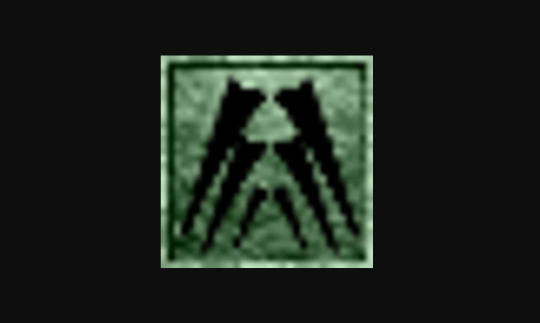
A word on Constant Effect Enchantments
We've had occasion before now to reflect how constant Illusion enchantments are detrimental to one's mental health. @theseventhoffrostfall has aptly dubbed it "the dunmer version of lead-based makeup" which also underscores how it became a kind of fashion statement, to cloak oneself in, say, cumulative Chameleon enchantments, in civil setting. The harmful effects of illusion magic ranges from insidious to truly devastating: as is the case with Sanctuary spell, shown to be the main driver of disassociative disorders—conditions that involve experiencing a loss of connection between thoughts, memories, feelings, surroundings, behavior and identity. Under these circumstances, one can imagine how even the lowliest Light spell—if made into a constant effect—would be further exasperating these symptoms.
Here I refer you to my monograph: "On pathology of indirect Light spells", Black Horse Courier Press, Imperial city.
While Reflect and Detect spells (of Mysticism school) may work towards eroding one's circumspection—the ethereality, the ghostliness of Sanctuary is an assault on faculties most fundamental.
So once again I ask you to call upon your local Council-members to vote on banning this magical mal-practice!
#elder scrolls#morrowind#tamriel#vvardenfell#morrowind lore#skyrim#oblivion#tesblr#tes lore#tes online#morrowind memes#magic#wizard#enchantment#sorcery#mage#mage class#gaming#spell#fantasy#spellcasting#tes 3 morrowind#enchanting#skyrim memes#elder scrols online#wizard problems#evil wizard#magic lore
50 notes
·
View notes
Text

Who was Lee Miller?
Why the model-turned-war photographer is finally getting her due
A surrealist with an incisive eye, finding the beauty and absurdity of everyday life. A model who posed for Vogue and sat for Pablo Picasso and Man Ray, but whose fashion career was suddenly cut short. A war photographer who embedded with the US military to chronicle the harrowing events of World War II — and posed defiantly in Hitler’s bathtub on the day of his death.
Lee Miller was an American artist who remade herself many times without straying from the principles that guided her life and career. When she died in 1977, her photographic work had largely been forgotten; her own family was unaware of the scope of her practice, and what she witnessed in the war, until they found her cache of negatives. Now, five decades later, she’s the subject of the Kate Winslet-led biopic “Lee,” which premiered at the Toronto International Film Festival in September, as well as a recent monograph of her work and an exhibition at mega-gallery Gagosian in New York, where some of her prints were for sale.
Her son, photographer Antony Penrose — whose father was the British surrealist painter Roland Penrose, whom Miller married in 1947 — has made it his life’s work to bring attention to his mother’s legacy. He co-directs her archive with his daughter, Ami Bouhassane, and has authored multiple books about Miller, including the most recent, “Lee Miller: Photographs.” For the past decade, he’s consulted on “Lee” as it came together, and has finally begun its run in both the United Kingdom and Spain.
“There were movies proposed and very nearly made before,” Penrose said. “This is the one that we’ve been waiting for, because I feel it is a brilliant rendition of Lee’s life, values and personality.”
He still recalls how “bewildering” it was when he and his late wife, Suzanna, found some 60,000 of her negatives and prints in their attic shortly after Miller’s death. She had developed a unique surrealist way of looking at the world, capturing everyday eccentricities that play with the viewer’s perception: a scratched-up door at a jewelry store becomes a small explosion of sparks; tar spilled on the street glistens darkly like some deep-sea or cave-bound creature.
But her range was staggering. Here was Elsa Schiaparelli supine among two cheetah sculptures, and Marlene Dietrich posing in dramatic sun in the designer’s ruched house coat. Here was a crowd of people spitting on four women, their heads shaved, as they went to trial for accusations of associating with Nazis. Here were the bodies of concentration camp victims in Dachau, and the liberated prisoners standing over a pile of human bones.
“None of us — and that includes my father — knew the scope of Lee’s work, particularly her war work,” Penrose said of his mother. “She deliberately didn’t tell him what was going on, because she didn’t want him to be worried.”
After the war, Miller struggled with depression and alcohol dependency, decades before post-traumatic stress disorder — and its symptoms — was officially recognized. When the occasional curator or art historian would turn up to better understand the depth of her work, Penrose said Miller would deflect the focus and downplay her career. It’s only been through her archive that he was able to understand the life she lived.
“It was a voyage of discovery,” Penrose added. “It was like finding a person that we had not known before — way beyond our kind of understanding and knowledge.”
Reinventing herself
For many years, Miller was remembered primarily for her modeling work in New York and with the reductive label of “muse” during her time in Paris. She sat for Pablo Picasso as he painted her in lurid yellow and green, illustrating her “extraordinary wit and liveliness… and a very bold, confrontational approach to life,” according to Jason Ysenburg, a director at Gagosian and co-curator of the gallery’s show “Lee Miller and Friends”.
She was also often remembered — but not credited — for her portrait collaborations with Man Ray, with whom she was romantically involved and remained friends throughout her life.
“Those images of Lee were as much by Lee as by Man Ray,” added Richard Calvocoressi, the show’s other co-curator.
Miller has been described by many as a supermodel on the cusp in her early twenties, a period just before she met Man Ray. But she was seemingly blacklisted by fashion clients overnight, after a portrait of her by the photographer Edward Steichen was licensed for a Kotex ad promoting menstrual products.
“She absolutely came to a crash stop. Nobody wanted the Kotex girl modeling their frocks,” Penrose said. “She didn’t even know that the photograph was going to be used for that purpose — it was bought through an agency.”
Though Miller used the setback as a sign to shift her practice, sexist social structures continued to shape her career. Art historians and curators of the 20th century relegated female surrealists — many of whom appear in Miller’s images, like the painter Leonora Carrington and the photographer Dora Maar — to the sidelines of the movement when they were, in actuality, crucial figures; Penrose recalls that his own father referred to them more as “muses” than artists in their own right, despite their prolific outputs.
But despite the imbalances within their group, Miller’s time with her friends ahead of World War II was seemingly idyllic. She’d left Paris in 1932 for New York when her relationship with Man Ray ended, and then unexpectedly married Egyptian businessman Aziz Eloui Bey and moved to Cairo. When she spent the summer of 1937 back in Paris and met Roland, it sparked a two-year affair (and series of love letters when they were apart), that eventually resulted in the dissolution of her marriage.
Some of Miller’s emblematic images of the period show their vacations across the south of France from beach outings with Roland, Picasso and Maar and the model Ady Fidelin, to a picnic that has drawn comparisons to Édouard Manet’s famed painting “Le Déjeuner sur l’herbe” as a topless Fidelin is pictured alongside Man Ray, the poet Paul Éluard and artist Nusch Éluard.
But as Ysenburg points out, the tumult of the era had already begun — Nazism brewed in Germany and the Spanish Civil War broke out, prompting Picasso’s monumental and career-defining work “Guernica” which was painted the same year Miller returned to Paris.
“It was a community that in the sense that they were friends and lovers,” Ysenburg explained. “It seemed a very carefree time for them in a world that was changing very quickly.”
She saw ‘what we’re missing’
Many artists fled Europe in the 1940s, and Miller could have gone back to New York to safety, Penrose said. But she’d settled down with Roland in London and refused to leave, instead becoming a photojournalist for British Vogue, documenting women who were contributing to the war efforts, and taking both fashion and street images during the Blitz.
Later, she was accredited as an official correspondent with the US armed forces — one of just four such female photographers. During this period, in Normandy and in Munich she worked closely with the Life photojournalist David E. Scherman. Together, they entered Hitler’s apartment with soldiers on April 30, 1945, the same day that Hitler shot himself in his bunker in Berlin. Just that morning, Miller and Scherman had taken photographs in Dachau; Miller tracked mud from the concentration camp all over the apartment’s floor before stripping down to pose in the bathtub. She took the same photo of Scherman, who was Jewish, as well.
“Those boots carried her that morning around the concentration camp, and now she’s grinding the filth of that place into Hitler’s nice clean bathroom,” Penrose said. “They prove that she’s not there as a guest in his house. She’s a victor.”
Even as Miller faced the harrowing effects of the war across Europe — sights that would take a toll on her in its aftermath — she still maintained her keen artist’s eye. After all, she believed there was nothing “more surrealist, more mad, more nightmarish” than the war, according to Calvocoressi.
“Even in the most dangerous and demanding circumstances, she’s still looking out for weird, quirky images,” Penrose said. “I find that that so endearing — the hallmark of her artistry is just to see what we’re missing.”
Miller took her last assignment for Vogue in the early 1950s, as Penrose notes that she could no longer meet deadlines because of her declining mental health. But she didn’t stop photographing, taking some 1,000 photographs of Picasso as Roland worked on his biography, which published in 1958.
Penrose said that throughout the course of her career, she was always “looking for the metaphor” in her surroundings. Of the many poetic moments she captured, one took place in front of the Vienna Opera House in Austria’s capital in late 1945 amid the lingering destruction of war. Framed by twisted metal support beams and rubble, the soprano Irmgard Seefried is photographed singing an aria from the Italian opera “Madame Butterfly,” in what Penrose believes to be an image set up by Miller — who captured her with arms outstretched, completely in silhouette.
“In a way, it’s a reversal, because you would have expected the singer to be beautifully lit from all kinds of sources.” Penrose explained.
“Gone is the costume. gone is any kind of glamorization… what we have is this absolute passion, about the triumph of art over destruction.”
Daily inspiration. Discover more photos at Just for Books…?
28 notes
·
View notes
Photo




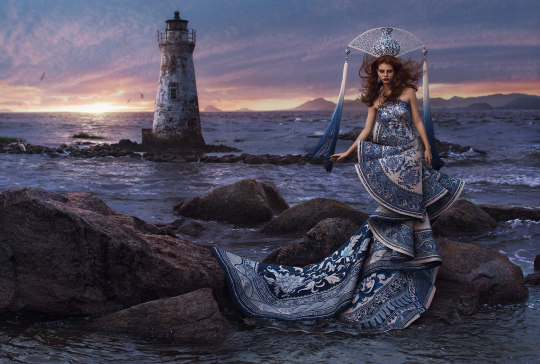
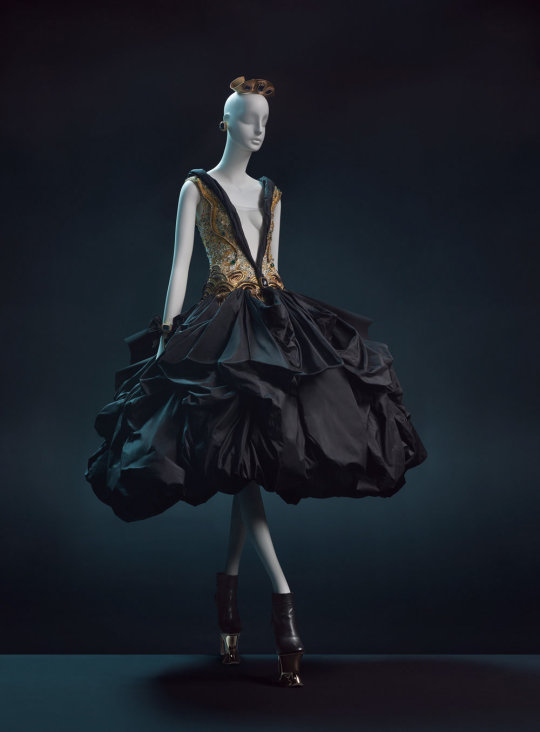




Guo Pei - Couture Beyond
Photography - HOWL Collective
Creative Direction & Retouch - Jim Lind
The first major book on China’s leading couture visionary reveals the intricate craftsmanship and imperial glamour that has fashion publications worldwide declaring Guo Pei’s creations 'the Empire’s new clothes.' An exponent of artisan craftsmanship and theatrical fantasy often compared to Alexander McQueen and Sarah Burton, Guo Pei dresses Chinese state dignitaries and American celebrities alike in richly bejeweled creations of imperial opulence. The designer’s first monograph, published on the occasion of her first solo exhibition, offers insight into the growing global influence of China and the complexities of its cultural transition.
(via Guo Pei - Couture Beyond :: Behance)
23 notes
·
View notes
Note
i never thought of modern au katara being a writer, but that's so fitting and i love it. do you see any parallels between her journey learning waterbending in canon with her gaining confidence as a writer in your au? ex being dismissed bc of all the disrespect the art of writing gets irl, meeting haru and being mutually inspired/ working with jet and having a fallout? i know there's a fine line between narrative parallels in aus and like, contrived shit like katara being the last mcr fan or smth
not the last mcr fan 😭 but yeah!! it feels like the very natural connection between her being the show's narrator and the way storytelling and narrative is such a crucial aspect of her identity, culture, the way she sees the world, and survives. i think her being an investigative journalist who travels and reports on various crises and exposes corruption and inequality, but also writes more personal essays on her own experiences, or even just writing about media and art and fashion and sports and the stuff she enjoys. historical monographs, journalistic exposes, personal essays, poetry, fiction, maybe even like. a children's fantasy series. truly, she can do it all!
however, unlike waterbending, i don't think it's the kind of thing she would aspire to excel at since childhood. i actually think that she wouldn't really try hard in any academic pursuits for most of her childhood/adolescence bc she doesn't feel like she'll ever be good enough anyway, so what's the point. she's like "i only learned how to read when i was five and i don't understand number theory i must be some kind of ignoramus." the prospect of actually being very smart in many ways (including academically) just totally eludes her. because in a mundane world like ours, where bending does not exist and there is no such thing as a chosen one, it is sokka, not katara, who is the shiny, special wunderkind, and katara is the one who compensates by excelling in areas that sokka does not (namely, athletics, activism, and art). so mapping those arcs into this world actually inverts a lot of their dynamics in the sense of what and who is valued.
obviously katara does nonetheless struggle with being valued as a waterbender (by the nwt, by sokka himself, by the fire nation) and has to work incredibly hard to prove herself, so the idea that she's never underestimated or undervalued in the show isn't entirely accurate, but there's definitely a sense, at least within her family and tribe, that she is the world's specialest princess, and although i still think she'd be kanna's favorite and cherished as the baby of the family and beloved by aang in modern au, she isn't deemed inherently worthy and special. because she isn't a waterbender, she's just a normal girl.
sidenote: i do actually think a lot about how katara and sokka both undermine each other out of jealousy, like it's just not sokka calling katara a freak for playing with magic water, katara is constantly dismissing and undermining sokka in a way that's like. hang on. does she think she's....punching up?? like i do think katara probably carries resentments about not being as smart and special as sokka and compensates via her bending in the same way sokka compensates for his lack of bending via his other skills. they are constantly caught in a cycle of trying to be worthy of being the other's sibling, with the ultimate result just being that they are both incredibly gifted and accomplished in their respective areas (azula and zuko also sort of have this going on, but it's less mutual, because azula's skills are valued and zuko's are not, whereas both katara and sokka possess valuable skills that make them special to their community).
anyway. as for katara's journey to becoming a writer, i think she would write for fun as a kid but never show it to anyone, not even aang. and then occasionally she'll hand in an essay for school that she actually put effort into, which is very rare, because she only puts effort in when she's genuinely interested in the subject, but sometimes she'll put in a lot of time and research and effort just to prove the teacher wrong, which is when she truly shines. and some of her teachers can actually see that she has a lot of potential when she actually allows herself to be vulnerable and her passion seeps through the page, but she never really pays attention when they try to tell her that she's talented, because she just assumes that they're only being nice to her because they know that she's sokka's sister and feel an obligation to praise her by association. so it's only when she gets to college, and enters a world where sokka simply does not exist, that she realizes that she has merit of her own as a writer, thinker, and student.
she begins writing essays for various school publications, and after a while starts publishing them online, and then eventually in legitimate journals. it takes her a long time to actually establish herself as a career journalist, because she doesn't have the luxury of just writing full time, but eventually she's established enough that she actually publishes a book of essays, and goes on a book tour, and is invited to speak at various universities and events. and then one day, during a talk at a college, she says, "you know, there's hope for everyone. i only learned how to read at the age of five. but i went at my own pace, and eventually found my calling." and the moderator is just like "uhhh.... that's actually above average??? you're basically just saying you've always been smart." and katara. shuts down for a second while she attempts to process this information before she just goes, "WHAT!!!!!!!!!!!!!!!!"
#surelyjtemple#asks#modern au katara working as a barista for her entire 20s and being addicted to twitter and being a massive jock#and always dragging her friends into supporting various causes and going to protests with her#and being really into fantasy and romance novels and getting into fights with her history teachers and and and#she is so important 2 me. -_-#modern au#katara#katara&sokka#fyi: he taught himself to read when he was 2. katara just assumed this was the norm her entire life.
26 notes
·
View notes
Text



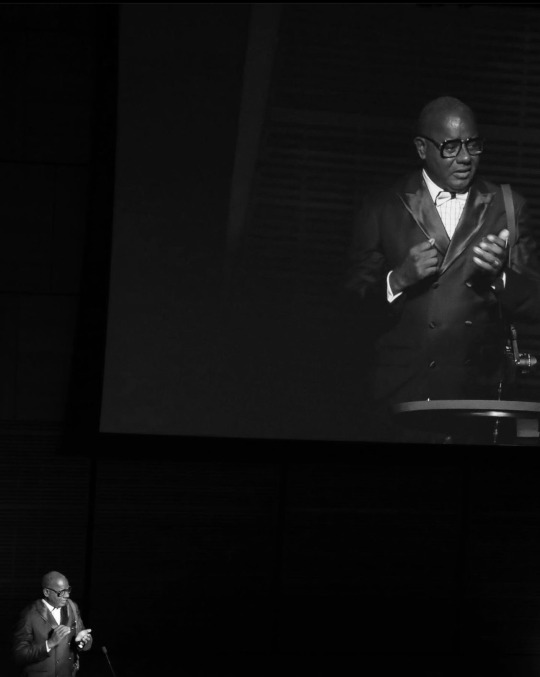
What an EPIC night, Brother Jamel Shabazz received the prestigious @luciefoundation Award presented by Peter Kunhardt, Jr. Executive Director for The Gordon Parks Foundation at Carnegie Hall… So well deserved.
Jamel Shabazz is best known for his iconic photographs of New York City during the 1980s. A documentary, fashion, and street photographer, he has authored 12 monographs and contributed to over three dozen other photography related books.
His photographs have been exhibited worldwide and his work is housed within the permanent collections of The Whitney Museum, The Brooklyn Museum, The Studio Museum in Harlem, The Smithsonian’s National Museum of African American History and Culture, The Fashion Institute of Technology, The Art Institute of Chicago and the Getty Museum.
Over the years, Shabazz has instructed young students at the Studio Museum in Harlem’s “Expanding the Walls” project, The Schomburg Center for Research in Black Culture “Teen Curator’s” program, and the Bronx Museum’s “Teen Council.” He is also the 2018 recipient of the Gordon Parks award for excellence in the arts and humanitarianism and the 2022 awardee of the Gordon Parks Foundation/Steidl book prize. His goal as an artist is to contribute to the preservation of world history and culture.
It is an honor to collaborate with Brother Jamel Shabazz on the @albeesquaremall book that has been years in the making.
Another one of Brooklyn’s Finest 👑🏆🫡 @jamelshabazz
CARTER™️ Magazine
#carter magazine#carter#historyandhiphop365#wherehistoryandhiphopmeet#history#cartermagazine#today in history#staywoke#blackhistory#blackhistorymonth#jamel shabazz
31 notes
·
View notes
Text
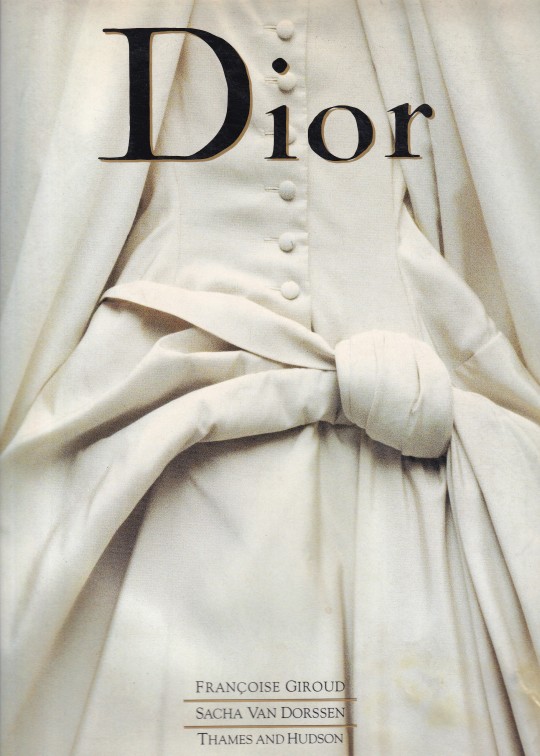
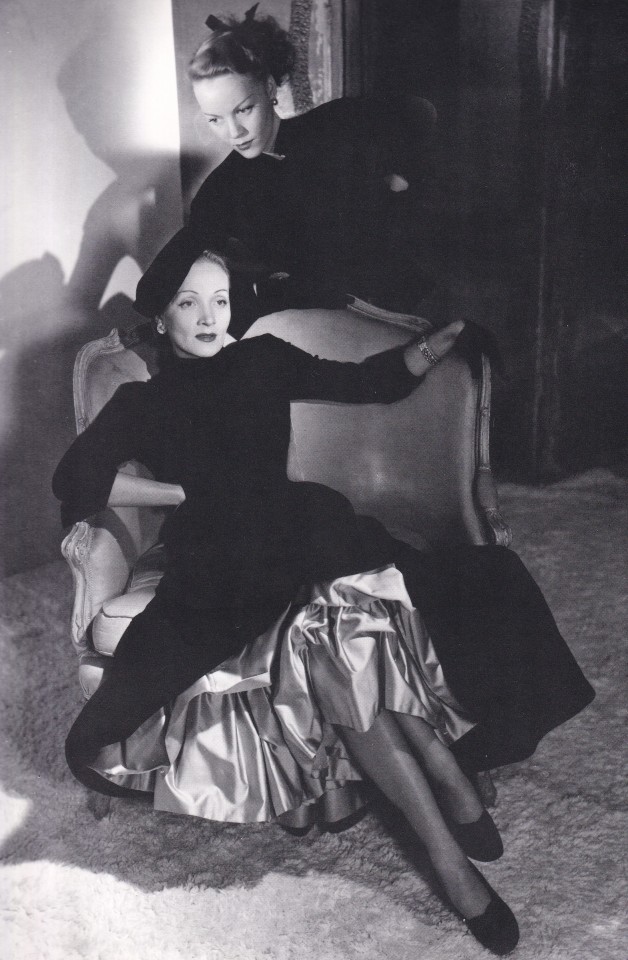
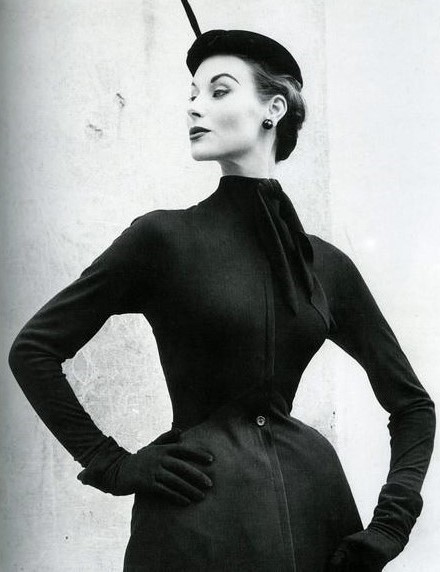

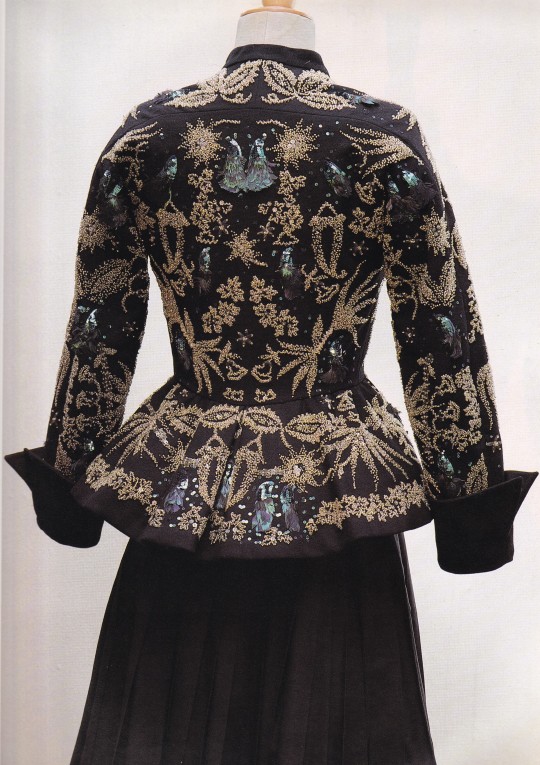

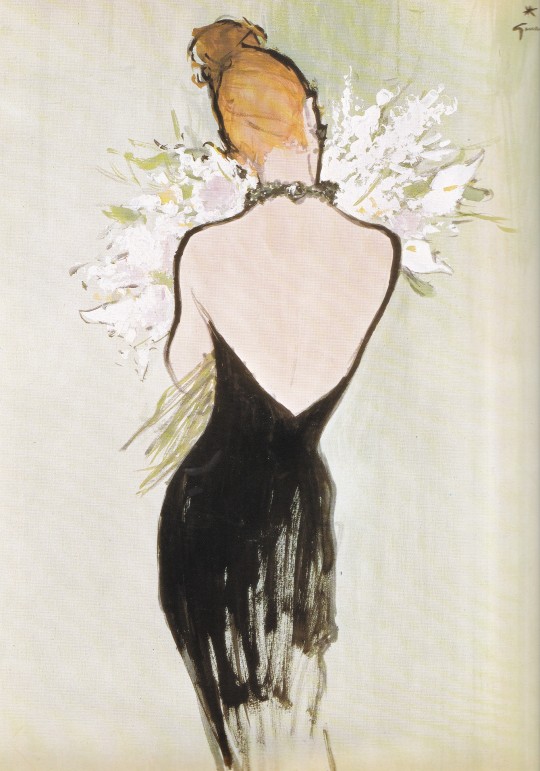

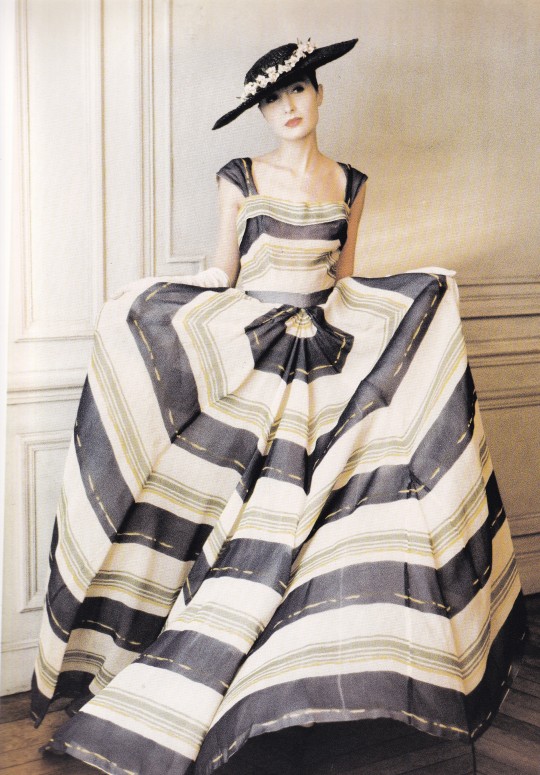

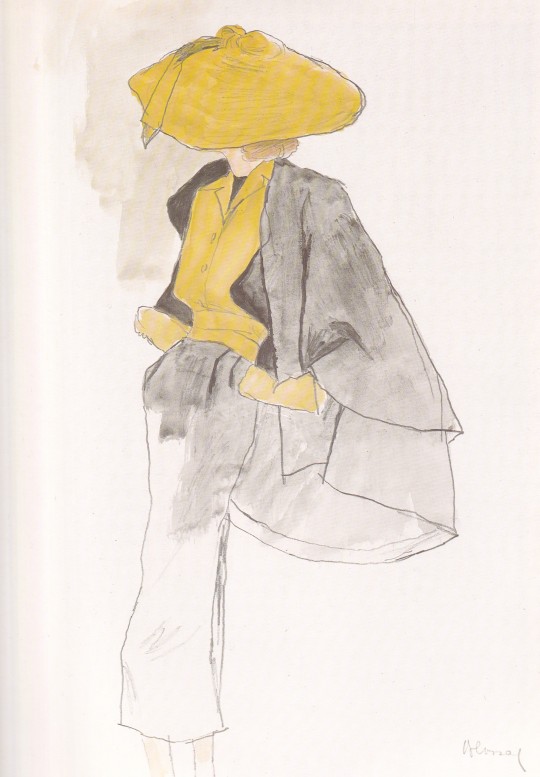
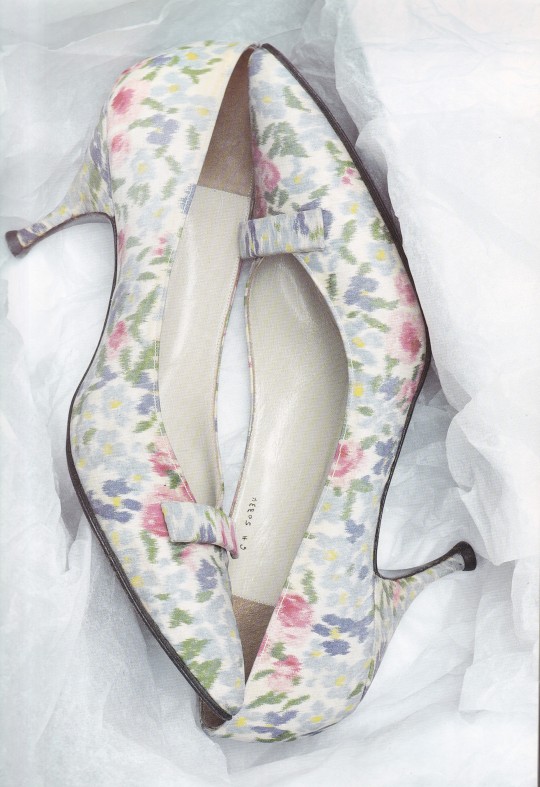
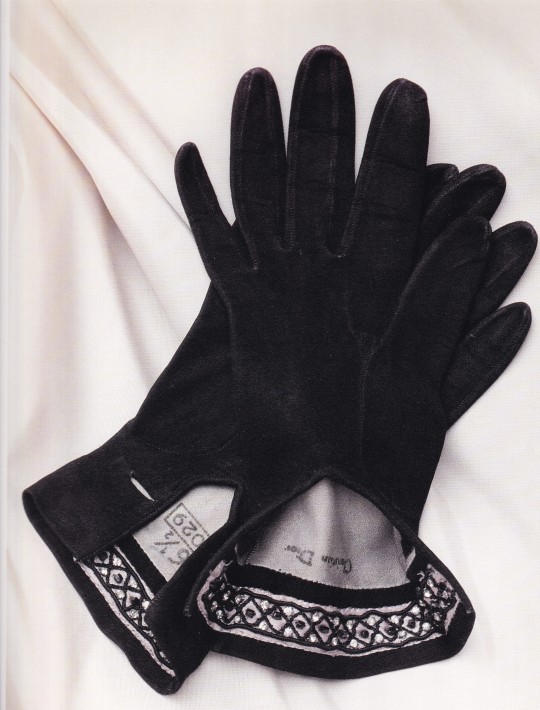

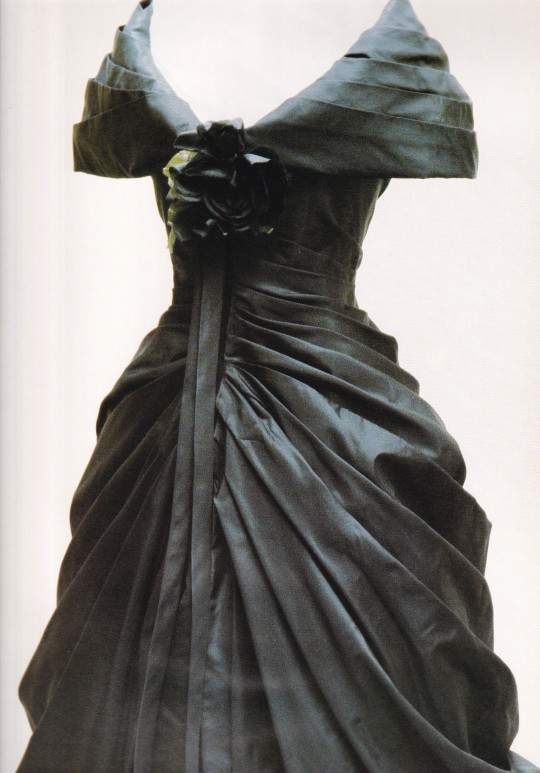
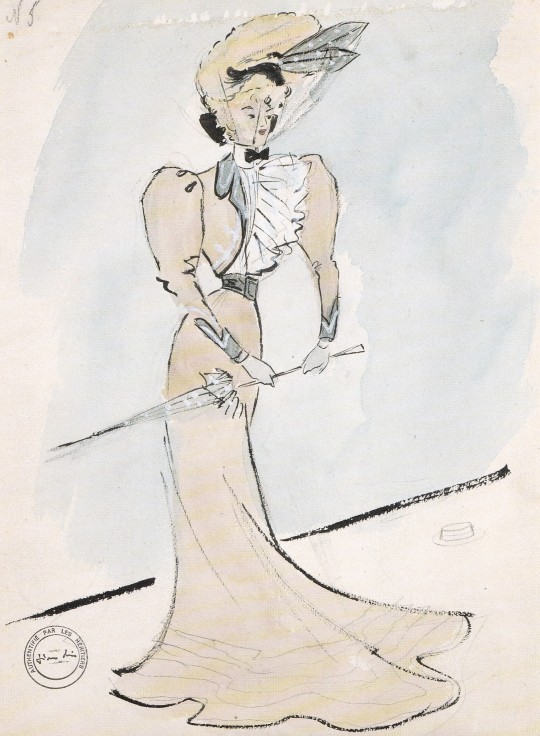
Christian Dior
Francoise Giroud, Sacha Van Dorssen
translated from French (Editions du Regard)
Thames & Hudson, London 1987, 342 pages, 25x33cm, ISBN 978-0500014301
euro 120,00
email if you want to buy [email protected]
The English-language edition of a beautifully-illustrated monograph on Christian Dior. The book begins with an essay on Dior and his fashion house, accompanied by archival photographs of the designer, the fashion shows and his world. A collection of photographs of Dior's creations - the clothes, jewels and drawings - reveal the grace and beauty of his post-War designs. Photographers featured include Horst, Cecil Beaton, Irving Penn, Louise Dahl-Wolfe and many others.
Il aura suffi de dix ans pour que Christian Dior prenne place parmi les cinq personnes les plus connues au monde. Le 12 février 1947, Christian Dior présentait sa première collection. Le New Look était né qui offrait à la femme, au sortir de la guerre, les délices d'une silhouette délicatement féminine vêtue d'interminables métrages de riches étoffes. Le génie de Christian Dior tient sans nul doute à son amour de la femme, qu'il habilla peu à peu de la tête au pied, à son exigence d'un travail parfait rarement égalé, à son intuitive compréhension de l'époque dont il précédait les désirs. Dior prit très vite l'ampleur qu'on lui connaît aujourd'hui et qui reste la griffe parisienne de la Haute couture par excellence. Ce livre se veut l'image même d'une légende dont Françoise Giroud, d'une plume vive et cursive, nous relate l'étonnante histoire.
17/01/24
#Christian Dior#Dior#Horst#Cecil beaton#Irving Penn#Louise Dahl-Wolfe#fashion books#fashionbooksmilano
28 notes
·
View notes
Note
Congrats on your new journal article! Can you talk a little about your research? What’s your area of focus, what research plans do you have coming up? I have an insatiable interest in other peoples’ research!
I am a medievalist by training, though my focus has also expanded into early modernism and modernism, and one of my main research interests is how medievalism or medievally-themed ideas (for better and often uh, very much worse) operate in modern politics, culture, and media. My latest journal article is examining the premodern history and the culture of crusading in the current Russia-Ukraine war; the one that came out earlier in the year was premodern queer history and the crusades. I generally work on premodern (broadly defined) gender/queerness, law and society, war, crusades, religion, and politics, based in but by no means confined to Western Europe, with ancillary interests in the Mediterranean and Eastern Europe. As noted, I also have a strong comparative-historiography interest in demonstrating how medieval history is used to inform modern society and why this is often very misleading.
My current research focuses on premodern queer history, which has been the theme and/or co-theme of most of my more recent stuff. I am developing a mini-book project based on my UK conference paper from this summer focused on reconsidering queer legal, textual, narrative, and physical space within the premodern/medieval context. The general disclaimer is often that this material is marginalized, individualized, ignored, irrelevant, or existing unremarked on the fringes of medieval society, far from the centers of power, which frankly I don't think is correct. If you look at the places in which the theme and substance of "queerness" (in the modern definition; this is not the same at all in the medieval world) exists, it in fact directly informs and creates some of the most central institutions (and anxieties) of European-medieval society, including the king, the church, the literature, and other areas of traditionally-defined "power." So while the study of queer silence, gaps, omissions, and other places where the heteronormative record has prevailed is useful in some amount of retrieving unsignified queer experience, this also gives rise to the notion that premodern queerness is only ever silent or subtextual, and places where it very explicitly appears or speaks have to be argued over or discredited or somehow created to say something other than what they say. So yes.
Because my current university role is primarily administrative rather than teaching-focused, I don't have nearly as much time for actual research as I would like. I am in the process of developing the written prospectus for the above project; it will go to the editorial board at a medieval and renaissance studies center and university press when I am done. We don't know when that will be, but we certainly hope something like a timely fashion (I also have another full-length research project/monograph on premodern queer history that will probably have to wait for a faculty post with dedicated research time, assuming I ever get one. We will see.)
44 notes
·
View notes
Photo

Ocean Wide “I grew up in Vancouver. During the last semester of the photography program I took in college, we had to do a two-week internship. I landed one at my favourite agency in Montreal, and during that time, one of the photographers I liked told me if I moved there, I’d be his first assistant.” - Kane Ocean, Photographer. Shot in a freewheeling documentary style Kane Ocean’s the book ‘WAYN’ is markedly different from his bright and slick fashion photography. Ocean is a fashion photographer for brands like ‘Burberry’ and ‘Ssense’. He’s lensed global stars such as Kaytranada and Pharrell. His instinctual touch can be traced back to the passions of formative years, spent skateboarding and playing in bands. Later DJ-ing at parties and nightclubs and running a small record label with his friends, ’00:AM’. For Ocean, the worlds of music, skateboarding and photography were always connected. For years he religiously documented his life and shared the images online. Ocean began to feel that releasing his work on the internet was “vapid” thus compelling him to make something more meaningful with his diary photos. In ‘WAYN' one encounters a varied cast of characters ranging from friends of Ocean’s in the music scene and Canada’s underground to strangers met across the world. With little written context the resulting book forms a visual tour of Ocean’s days and nights, inviting the viewer to imagine stories around the action-packed scenes - from a self-portrait with a bloodied nose to a flaming rubbish bin in New York. ‘WAYN’ by Kane Ocean is out now. #neonurchin #neonurchinblog #dedicatedtothethingswelove #suzyurchin #ollyurchin #art #music #photography #fashion #film #design #words #pictures #monograph #youthculture #friendship #nightlife #contemporary #photographer #skateboarding #canadian #musicscene #00AM #travel #fashionphotography #wayn #kaneocean (at Worldwide) https://www.instagram.com/p/CdsVSZ9IOwf/?igshid=NGJjMDIxMWI=
#neonurchin#neonurchinblog#dedicatedtothethingswelove#suzyurchin#ollyurchin#art#music#photography#fashion#film#design#words#pictures#monograph#youthculture#friendship#nightlife#contemporary#photographer#skateboarding#canadian#musicscene#00am#travel#fashionphotography#wayn#kaneocean
1 note
·
View note
Photo

Ann Demeulemeester: S/S 1998 Collection, via Ann D. Monograph Rizzoli Book. Scan Provided by @f.liiiz
ARCHIVE.pdf: Fashion Book Scans, Articles, and Content for the World.
495 notes
·
View notes
Text
Fic Writer Meme
AO3 Name: OldShrewsburyian
Fandoms: An embarrassing number because I often find myself needing to write One Specific Thing, but led by: Sherlock Holmes (assorted versions, but especially canon); Timeless; The Hour (still not over it); Foyle's War (mysteriously perfect); Merlin (...I don't have an excuse, I just rewatched it early in the pandemic.) The Wimseyverse and the Morseverse also account for several fics each.
Number of Fics: 134 (oops?)
Fic I spent the most time on: I'm honestly not sure. Writing novella-length fics that require research is a (bad?) habit of mine. The most recent of those is All the Powders of the Merchant. ...It might be a still and woven blue though.
Fic I spent the least time on: ...I'm also not sure. I will say (confess?) that I just whipped The Hands File together for an informal Holmestice round without thinking about it too hard. It was fun!
Longest fic: The Craven Hive
Shortest fic: I have podfics, 3-sentence ficathon fills, and quite a few drabbles!
Most hits: and history immeasurably is wealthier (this is partly due to good timing, I think; the second season of Timeless had ended, and we were all excited by possibility and full of hope.)
Most kudos: Rightwise Born (this is largely due to the size of the Merlin fandom, I think; it's not a popular fic in the grand scheme of things.)
Total Word Count: 516,053 (that's five academic monographs of words; nobody look at me)
Favorite Fic I Wrote: I usually answer The Craven Hive (we write fic for ourselves first and foremost, and this is my "the Holmes-Watson partnership is about everything that is most important in human relationships actually and here's how human love survives cataclysms and also I have a lot of feelings about WWI" fic.) I will also, though, mention that The House of Magic is the only fic for Guzaarish on AO3, and I'm proud of filling that void. Also, several other people have said they're glad it exists.
Fic You Want To Rewrite/Expand On: ...I do also occasionally think about expanding The Craven Hive. Or taking the plunge and writing out my post-canon "here's how my ship can still win" series following on from Only To Uncertain Days (Foyle's War.)
Share a Bit of a WIP or story idea you are planning on: I'm currently writing... an Ivanhoe AU set in 1930s NYC, which is either unhinged or entirely predictable of me or somehow both. @halfbad-333 generously let me run with the idea, and @counterwiddershins is generously beta-reading. It contains the Rebecca-Rowena friendship we deserve, and thus paragraphs such as:
Rebecca folded her hands on the desk. “Rowena, you know I love you, and I love that you always see the best in people — and in the world — but you do realize that I have hired this man because he knows how to use a gun, and how to intimidate people without one?”
I was kindly tagged by @mudlark2019; I tag in turn, in the usual non-obligatory fashion, @gaslightgallows, @sanguinarysanguinity, @tinydooms, @shredsandpatches, @mercurygray
32 notes
·
View notes